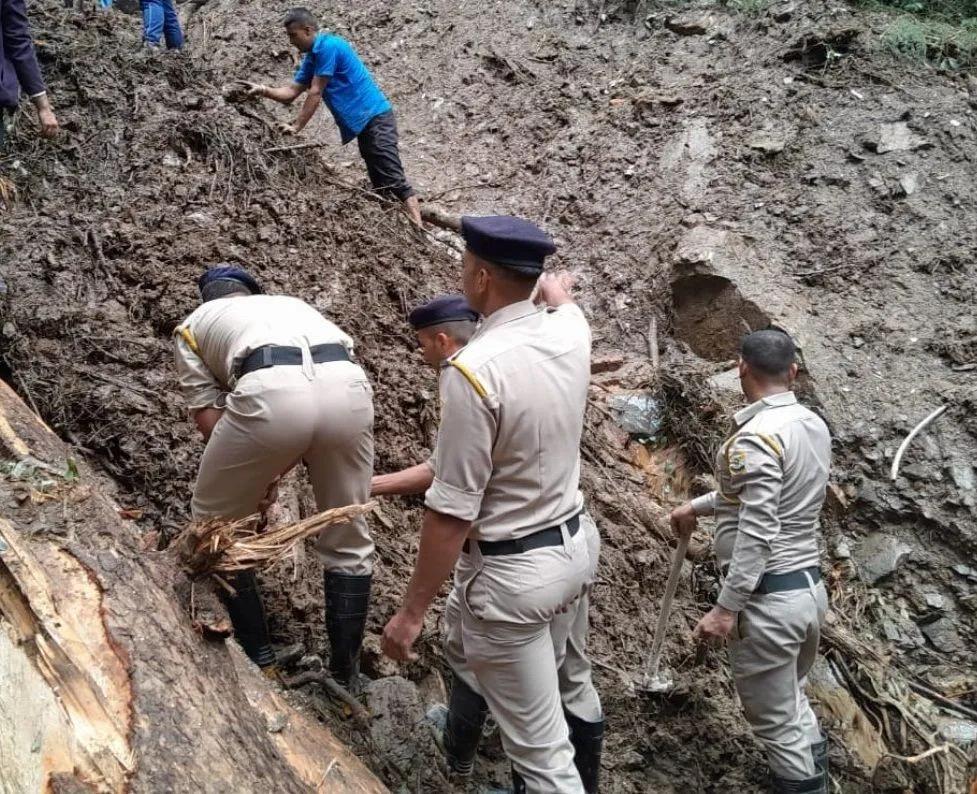Shimla: The constant rise in land and sea temperatures have made the Himalayas vulnerable to torrential rains, say climate experts.
They say the ongoing floods and devastation in the Himalayan states of Himachal Pradesh and neighbouring Uttarakhand, where farming communities are some of the most vulnerable, are proof of the increasing climate risks to an already vulnerable and fragile ecosystem.
They attribute rising temperatures to the increased atmospheric evaporation and humidity levels for the sudden extreme rains.
The heavy rains that have besieged Himachal Pradesh over the last weeks are consistent with the patterns expected in a warming world, explains Anjal Prakash, Clinical Associate Professor (Research) and Research Director, Bharti Institute of Public Policy, Indian School of Business.
Increased temperatures can lead to more intense rainfall events, escalating the risk of landslides and flashfloods.
The vulnerability of hillside communities and the crumbling of essential infrastructure further magnify the tragedy. Immediate action is imperative, Prakash, an Intergovernmental Panel on Climate Change (IPCC) author, told IANS.
Vulnerable mountain communities are already experiencing significant adverse impacts like loss and damage to lives, property, heritage, and infrastructure.
Floods and landslides are projected to increase, and the effects on fragile mountain habitats are particularly acute.
Monsoon rainfall patterns over India have seen a climatic shift in recent decades.
"The most significant change is that instead of having moderate rains spread out through the monsoon season, we have long dry periods intermittently with short spells of heavy rains. Hence this causes floods and droughts in the same season and occasionally in the same region or different parts of India," says Roxy Mathew Koll, Senior Scientist at the Indian Institute of Tropical Meteorology, Pune.
"We saw this pattern manifesting during the current year also. Even though the all-India average rainfall is near normal, the regional rainfall during the season has had deficits and floods. The pace of global warming is now accelerated, and we need urgent action as these extreme conditions will intensify in the near future.
"Climate action and adaptation at local (panchayat) levels should go parallel with mitigation at global and national levels. I am concerned that there is less focus on local adaptation. Instead of waiting for weather forecasts yearly, we need to be disaster-proof locally, based on sub-district wise assessment," Mathew Koll added.
What does science say?
The rise in extreme weather events is unprecedented, and they have been multiplying rapidly. Monsoon 2023 is an apt reflection of what climate change impacts would do to the Himalayas if global warming goes unchecked.
More heating means more extreme rainfall. The atmosphere, land and oceans are all warming at a faster rate.
The warmer it becomes, the more moisture the atmosphere can hold. This has led to more water being evaporated from the Earth's surface.
This increases the holding capacity of the air, which results in more droplets and heavier rainfall, sometimes in a shorter space of time and over a smaller area.
As per government records, 126 have lost their lives in Himachal Pradesh till date due to landslides and flash floods since the onset of monsoon, vital for agriculture and the livelihoods of millions. Thirty-eight people have been missing.
The state saw 113 landslides and 58 cloudburst incidents. The damage to roads has been extensive in Kullu, Mandi and Shimla districts.
The latest spell of heavy rainfall was caused due to northward movement of the axis of the monsoon trough, making weather conditions favourable for heavy to very heavy rains across the Himalayas.
Explaining the phenomenon, Akshay Deoras, Meteorologist and Research Scientist with the National Centre for Atmospheric Science and Department of Meteorology, University of Reading, Britain, said: "During break-monsoon conditions, most monsoon rainfall activities get focussed over Himalayan foothills and to an extent over Himachal Pradesh and Uttarakhand.
"At the same time, other parts of the country, like Central India, witness dry weather conditions. This is not new and has been happening ever since the existence of monsoon. The science of global warming is clear that if we continue to emit more and more greenhouse gases into the atmosphere, especially CO2, it will enhance the air's capacity to hold more and more water.
"Now, whenever favourable weather conditions appear, for example, in the case of break monsoon conditions, the air will release much more water vapour in the form of rainfall. This means the probability of an ordinary rainfall event intensifying into a heavy or extremely heavy one will increase because of global warming."
Echoing similar views, Mahesh Palawat, Vice President- Meteorology and Climate Change, Skymet Weather, said more warming means more energy in the environment, leading to more rain.
"Moisture availability is abundant in the atmosphere, which causes incidents like torrential rainfall in a short period causing damage like what we saw in Himachal and Uttarakhand this season," he added.
According to a recent study by the Kathmandu-based intergovernmental institute, The International Centre for Integrated Mountain Development (ICIMOD), the Hindu Kush Himalayas cryosphere (glaciers, snow and permafrost) is undergoing unprecedented and largely irreversible changes over human timescales, primarily driven by climate change.
The impacts are becoming increasingly clear, with increased warming at higher elevations, the accelerated melting of glaciers, increasing permafrost thaw, declining snow cover, and more erratic snowfall patterns.
The "water towers" of the Hindu Kush Himalayas, critical for downstream regions, are some of the most vulnerable to these changes in the world.
—IANS
Intense rains in Himachal show change in weather patterns: Climate experts
 T
TAug 18, 2023, 02:25 PM
